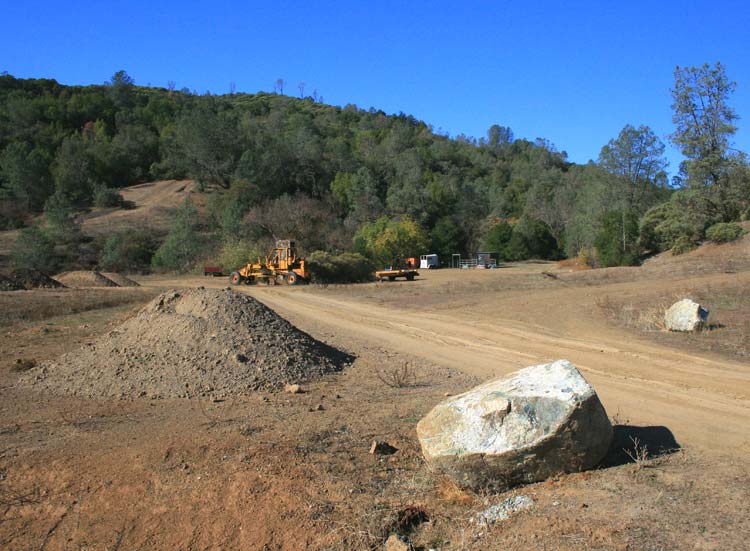 |
| Once slated for development, now protected for public use. |
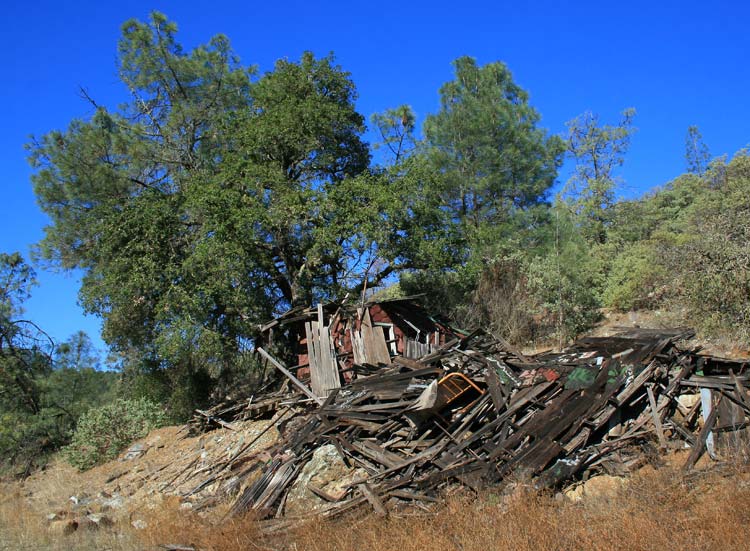 |
| Dilapidated shack and adjacent wood pile has become a man-made wildlife habitat. |
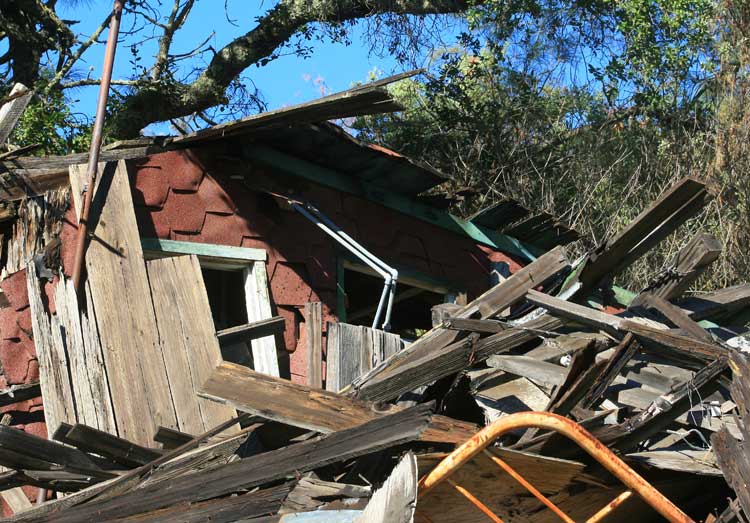 |
| An entire ecosystem develops when trash, trail-cleared debris is left in place. |
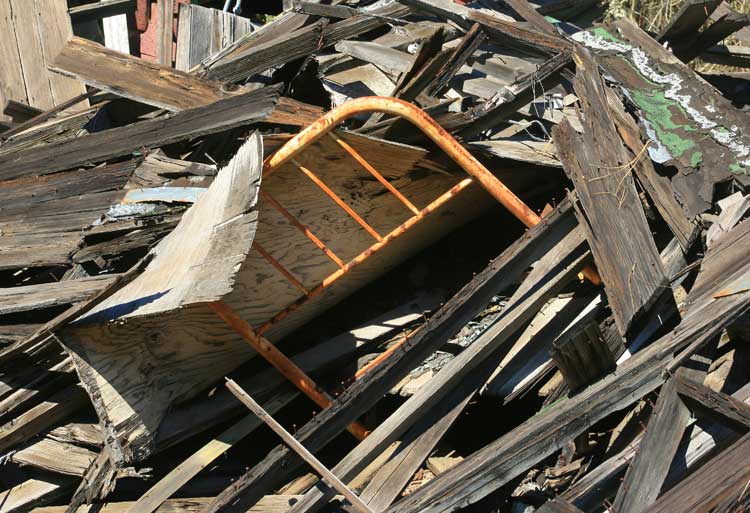 |
| This trash heap is several feet deep, a virtual labyrinth of tunnels and passageways. |
 |
| Scampering among the debris, a Merriam's Chipmunk. |
 |
Merriam's Chipmunks were once common in Santa Clara Valley but extensive farming,
urban sprawl, and habitat loss drastically reduced their numbers. |
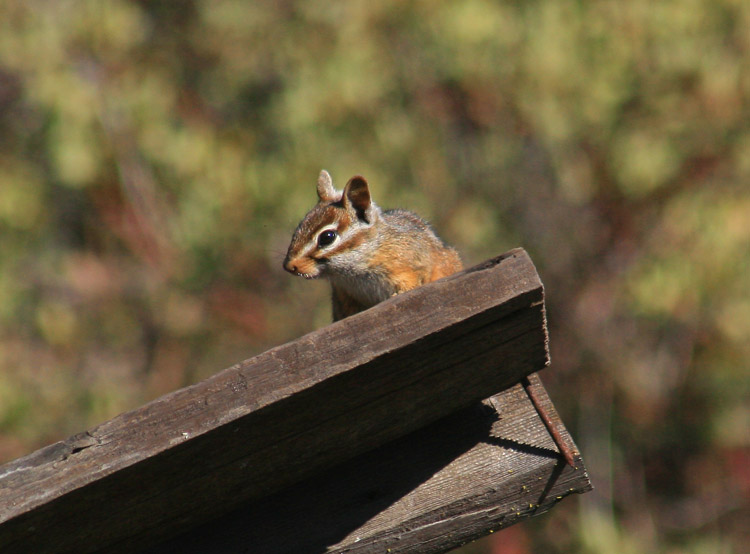 |
Atop its look-out, this chipmunk repeatedly chirped its
warning call alerting other wildlife to my presence. |
 |
| Nearby, an old cabin chimney is all that remains. |
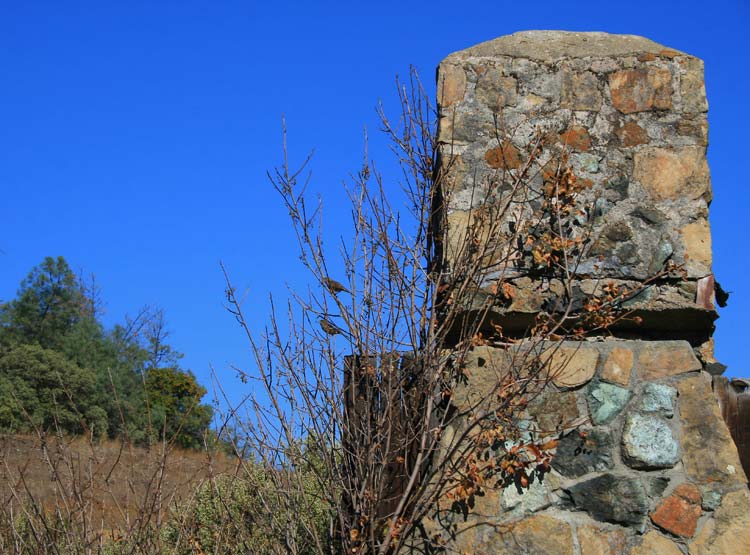 |
| A large poison oak bush attracts a variety of birds who come to eat its seed pods. |
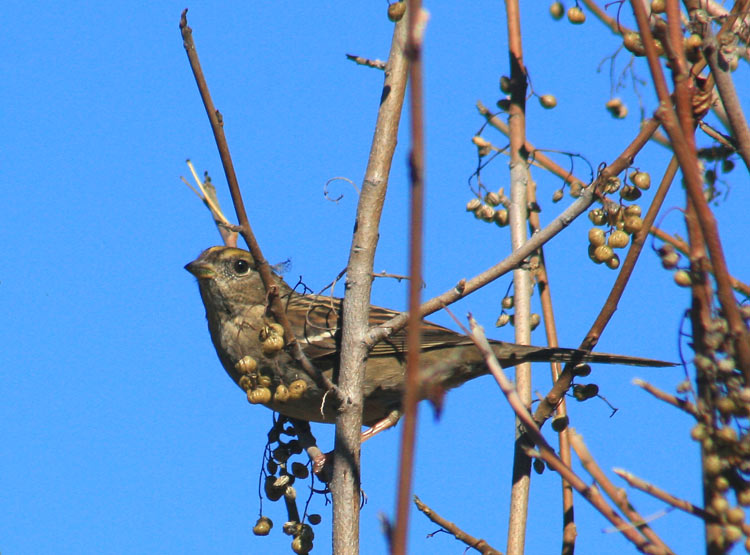 |
| One of several gold-crowned sparrows who've come to feed. |
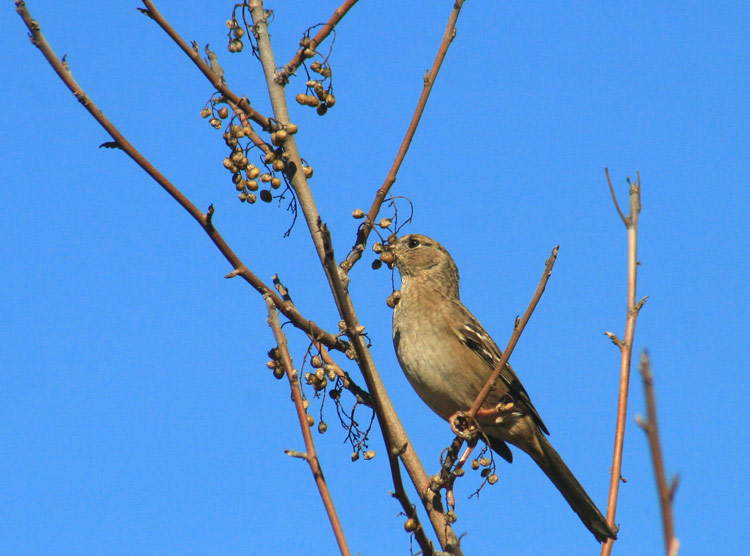 |
| The seeds from poison oak berries pass harmlessly through birds. |
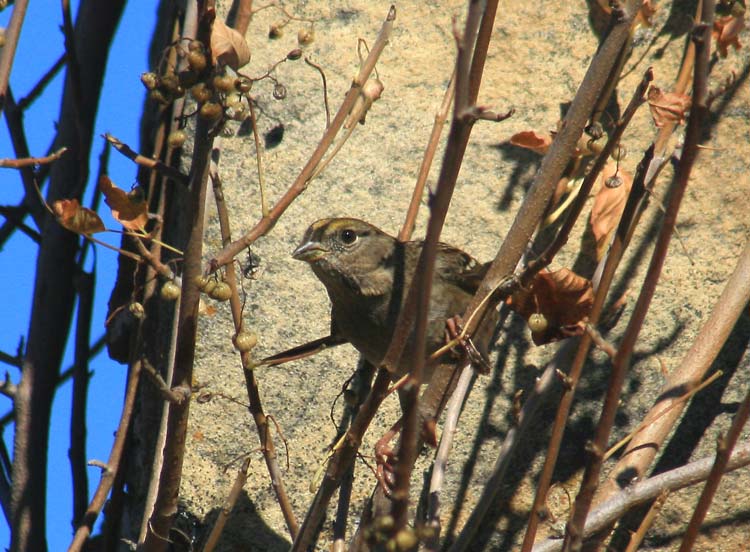 |
| Bird droppings spread poison oak seeds throughout the area. |
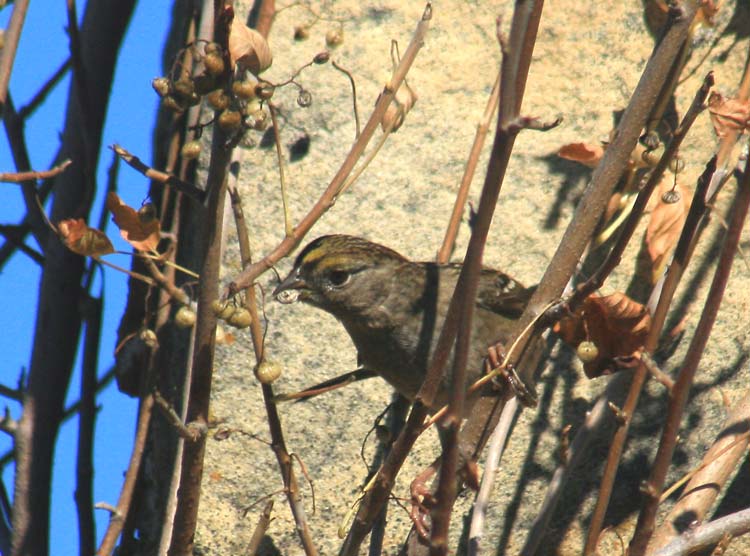 |
| Soon not a berry will remain. |
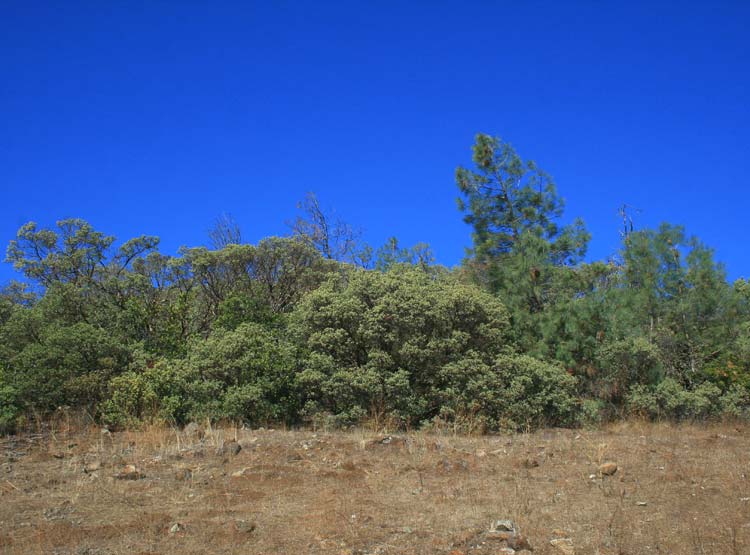 |
| A clear division between serpentine grassland and chaparral habitat. |
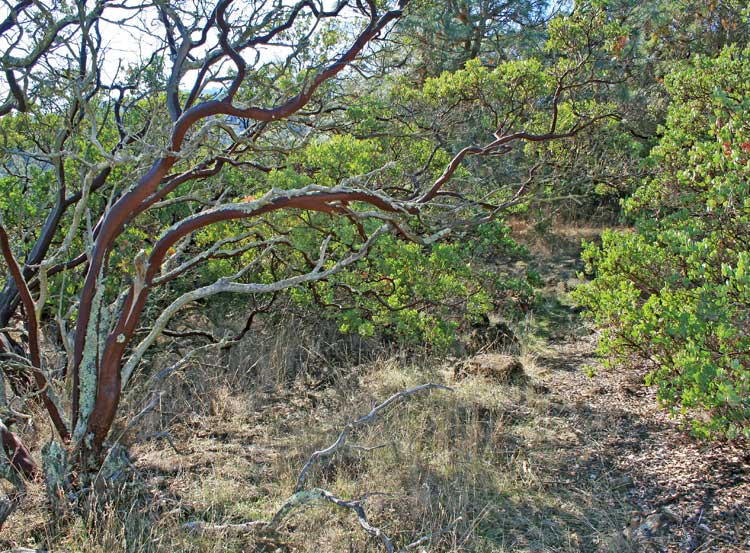 |
What at first seems impenetrable is actually an
entire
network of animal trails beneath the chaparral canopy. |
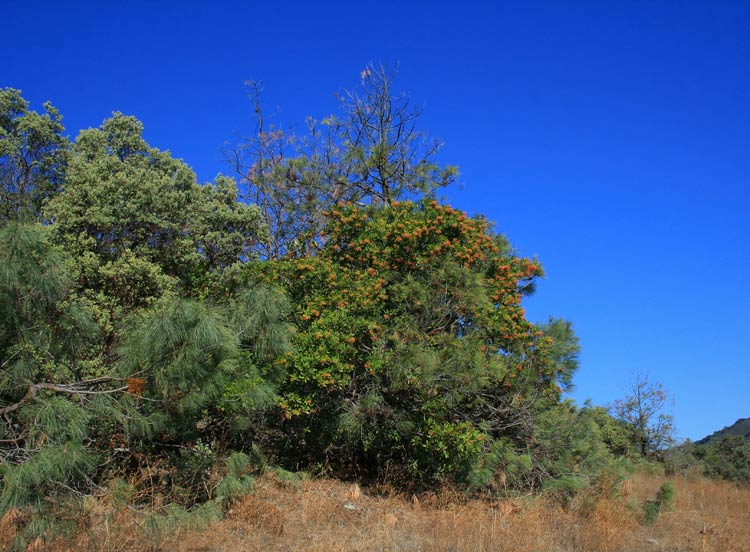 |
| A dense stand of our native gray pine and toyon. |
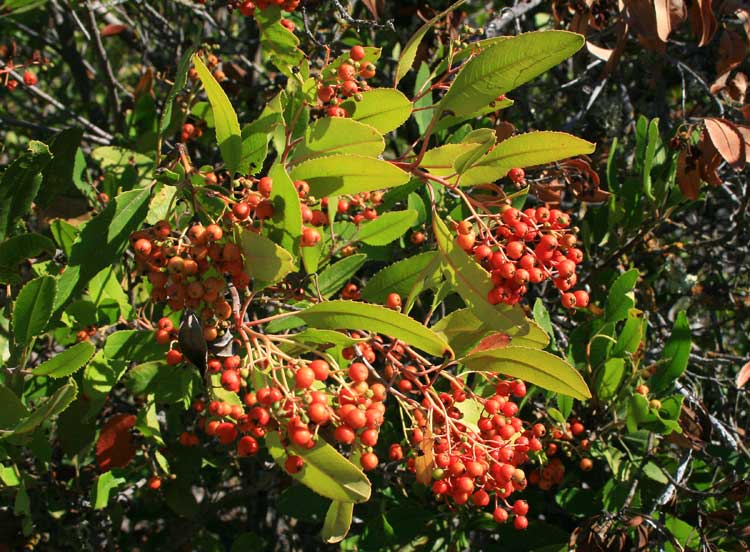 |
Toyon berries provide food for local wildlife.
Birds particularly gather to feed on the berries. |
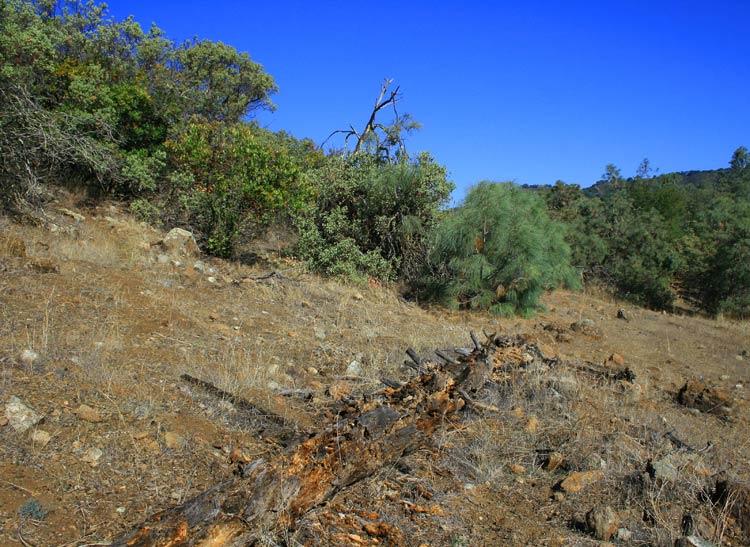 |
Like the old woodpile next to the cabin, this decaying
gray pine also provides habitat for wildlife. |
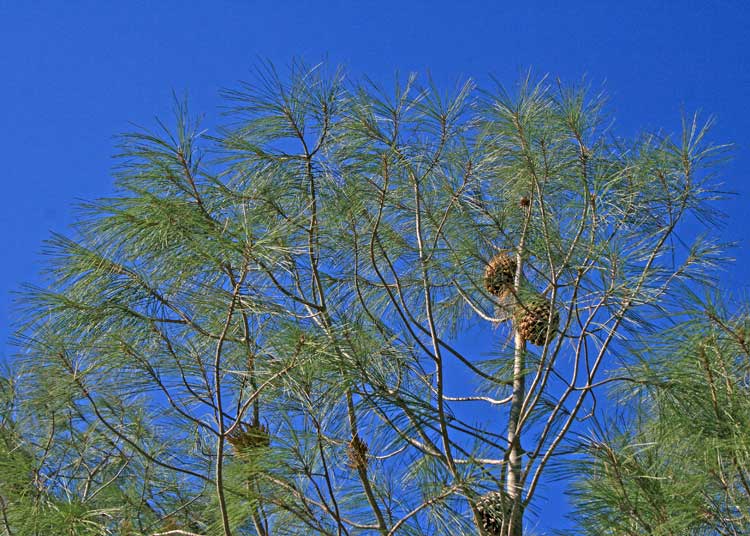 |
| Seeds from gray pine feed squirrels, mice and birds. |
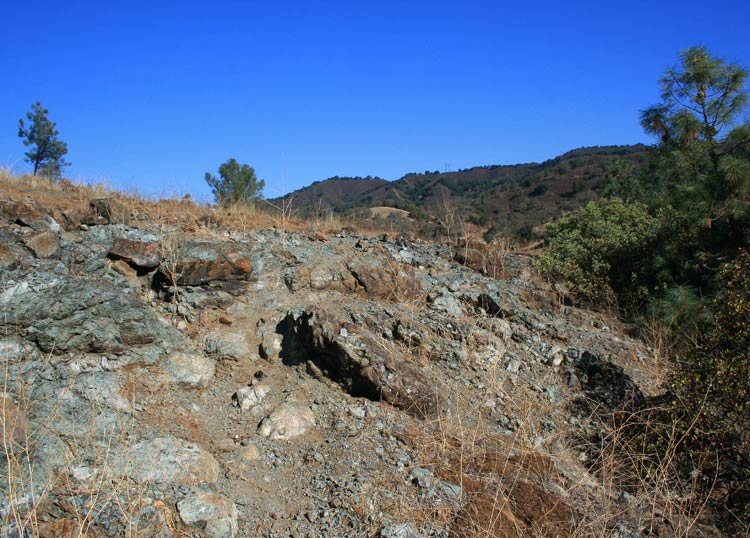 |
| Chaparral gives way to a large outcrop of serpentine. |
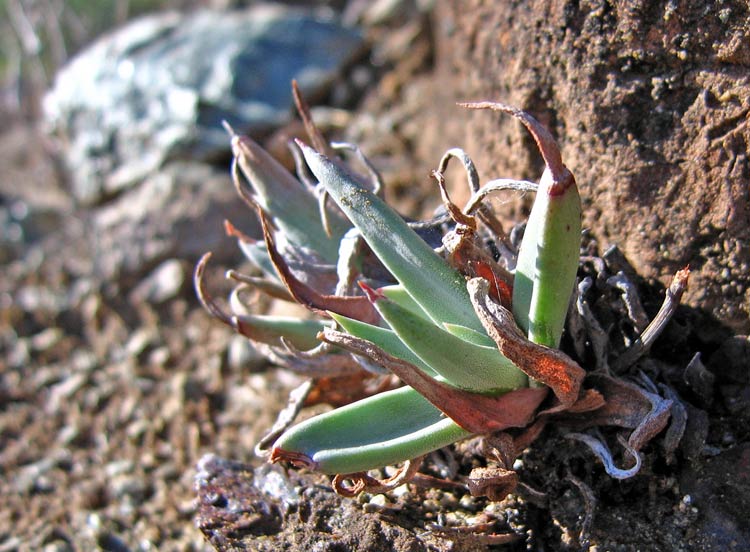 |
| Dudleya is often found growing in thin, nutrient-poor serpentine soil. |
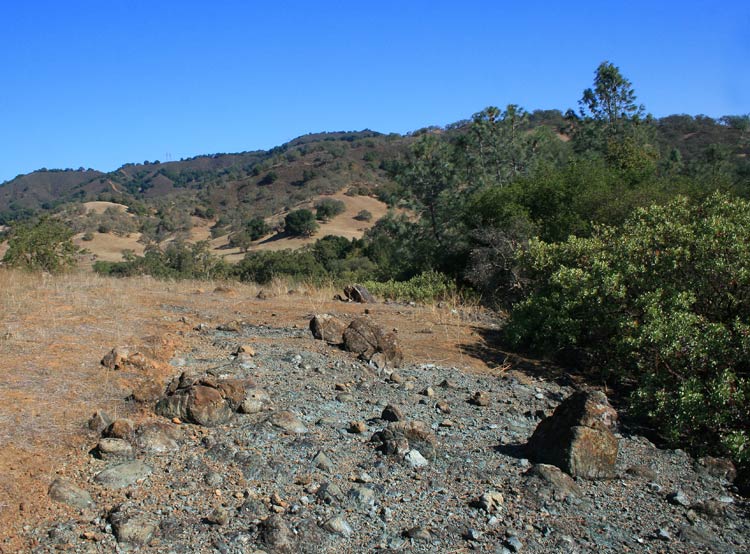 |
| What appears to be a patch of "scorched earth" is actually exposed serpentine. |
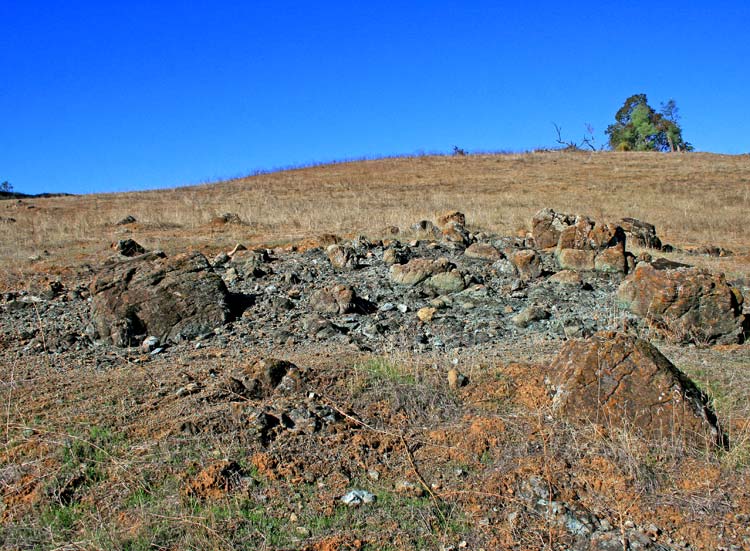 |
| Come spring, this serpentine outcrop will host several endemic wildflowers. |
 |
| Stock ponds are created by ranchers to provide water for cattle. |
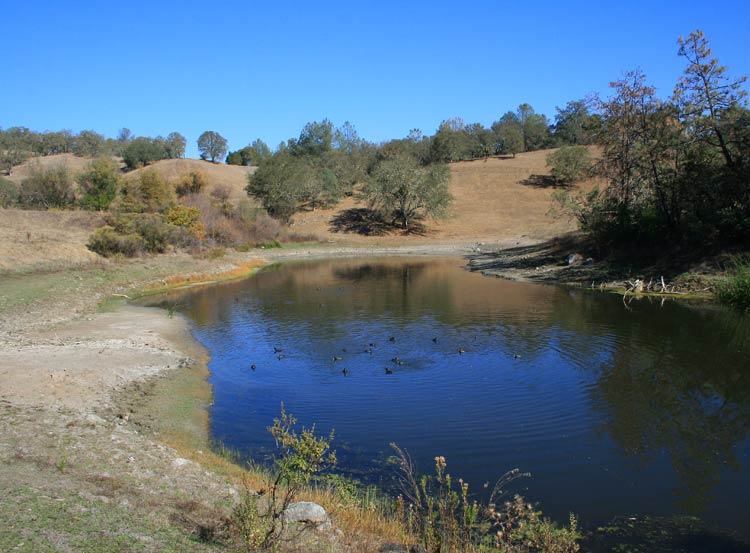 |
Stock ponds also create habitat for wildlife,
including threatened species like western pond turtles. |
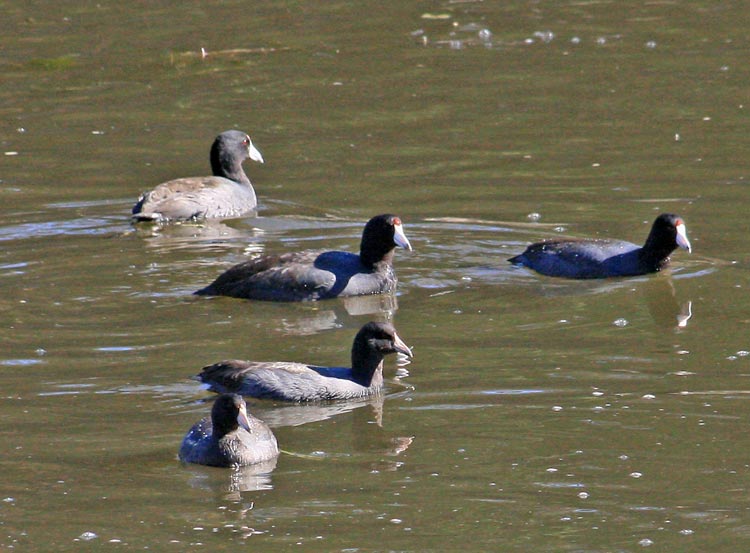 |
| Coots are commonly found in stock ponds. |
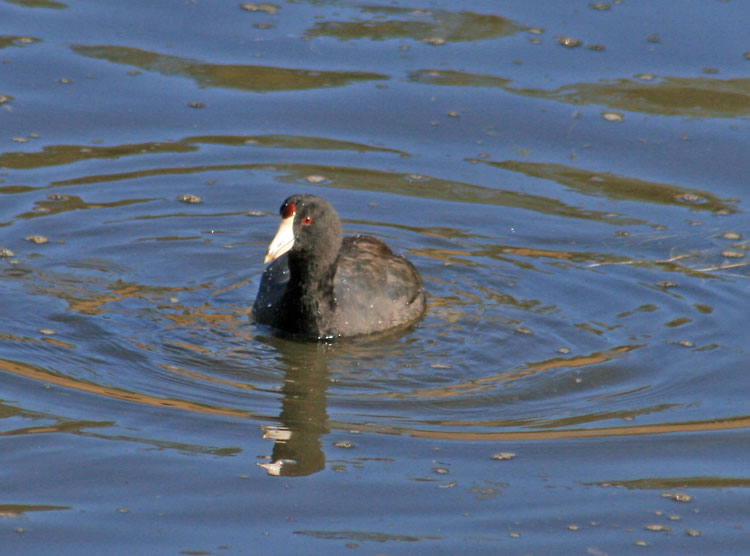 |
| They use their strong beak to forage for food underwater as well as along the shoreline. |
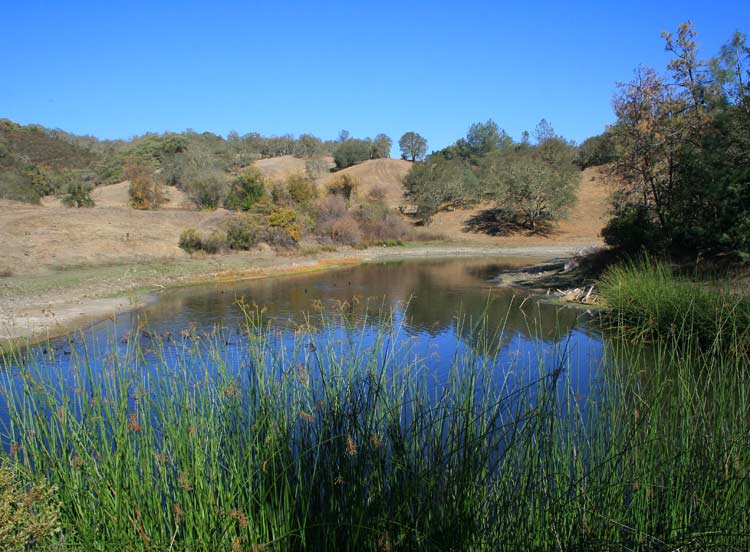 |
| A thick stand of tule reeds line the shore, habitat for numerous wildlife species. |
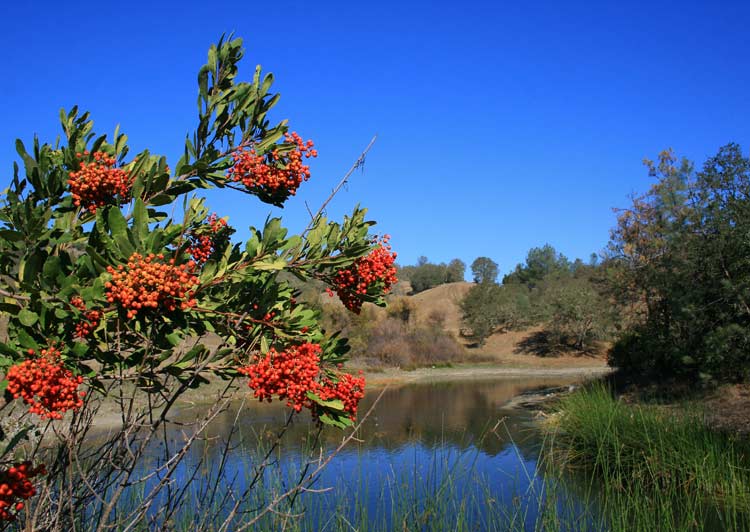 |
| A series of four stock ponds cascade into a nearby canyon. |
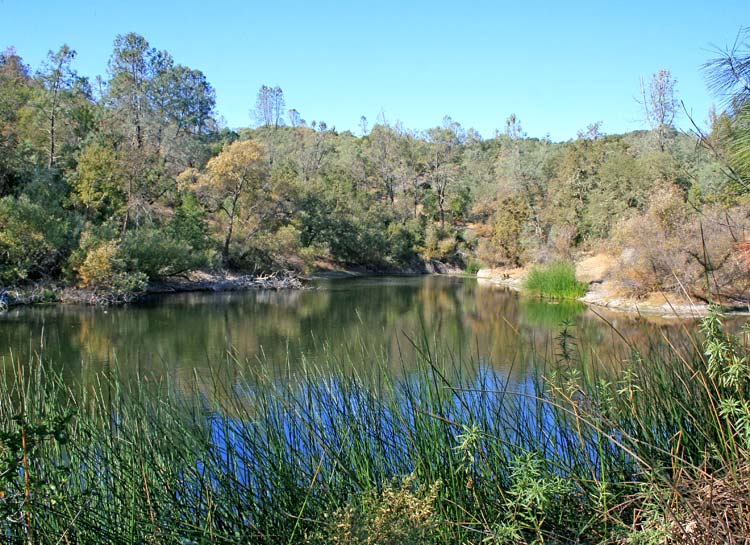 |
Another pond is also edged with tule reeds.
Grassland has now given way to chaparral and mixed oak woodland. |
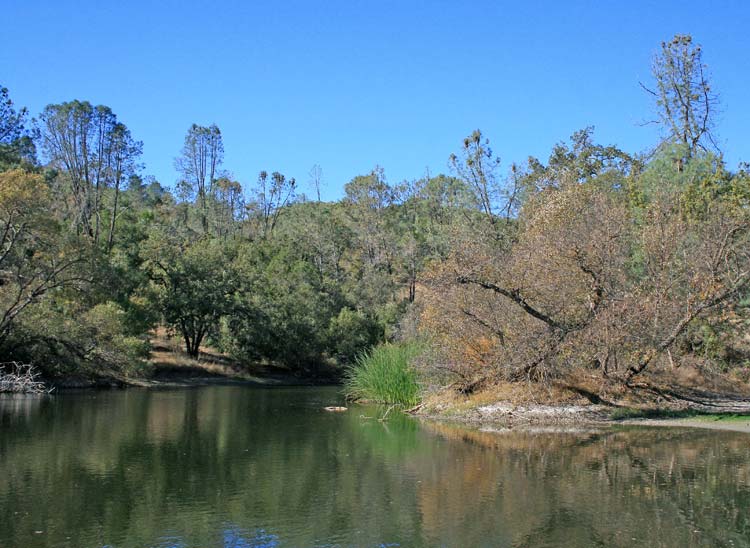 |
| Mature willow, gray pine, oaks line the shore. |
 |
| Last and smallest of the stock ponds is set like as bright jewel in its surroundings. |
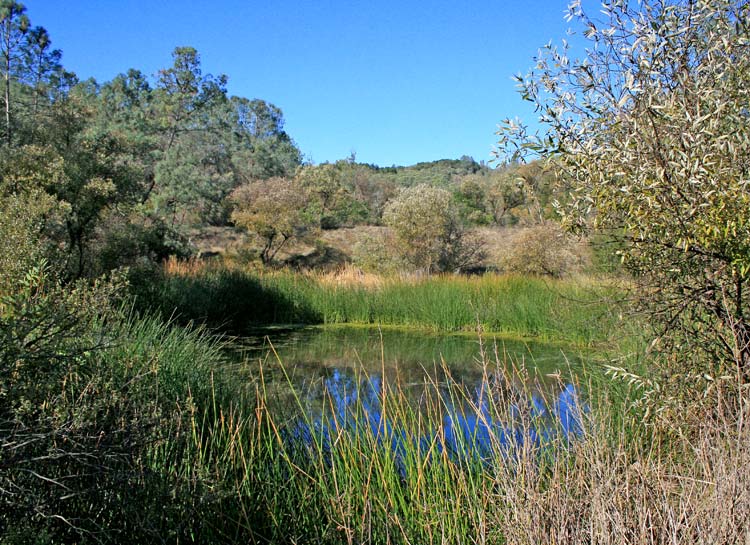 |
| Thick stands of tule reeds crowd sections of its shore. |
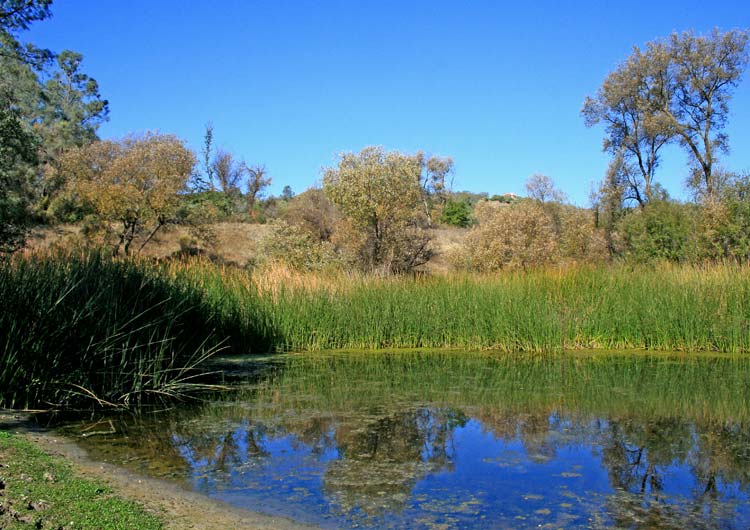 |
For more information about this preserve,
visit Santa Clara Valley Open Space Authority website. |
|

































